Ottawa has eliminated all remaining federal exceptions from the Canadian Free Trade Agreement (CFTA), Internal Trade Minister Chrystia Freeland said in a press release on Monday.
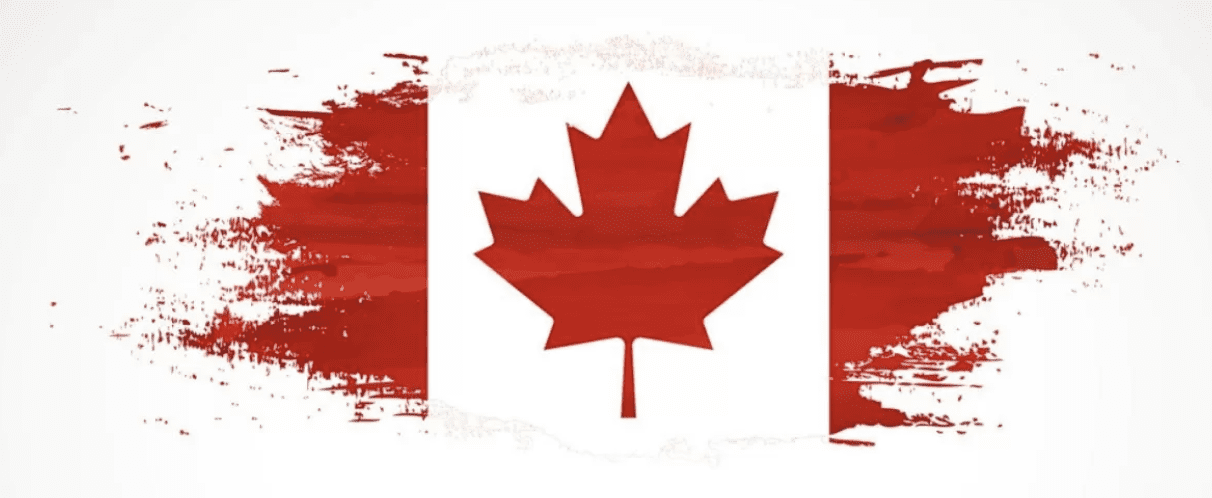

Ottawa has eliminated all remaining federal exceptions from the Canadian Free Trade Agreement (CFTA), Internal Trade Minister Chrystia Freeland said in a press release on Monday.


U.S. Ambassador Pete Hoekstra says President Donald Trump’s renewed 51st state rhetoric can be taken as a compliment, suggesting that’s how it’s seen by Prime Minister Mark Carney.

The Centre for Free Expression is calling for the reinstatement of a York Region paramedic whose union says she was fired over a social media post criticizing Israel’s military operations in the Middle East.
An open letter from James L. Turk, the director of the centre at Toronto Metropolitan University, and a group of lawyers and professors, expresses “deep concern” that the dismissal of Katherine Grzejszczak violates her Charter right to freedom of expression.
The letter, addressed to York Region Paramedic Services and several Regional Municipality of York officials, says the municipality has an obligation to uphold that right – even if it disagrees with the paramedic’s comments.
The Canadian Union of Public Employees says Grzejszczak, who has been a paramedic since 2010 and is a member of CUPE Ontario’s executive board, was fired on June 20 over a Facebook comment that criticized Israel.
A screenshot of the comment on a union post shared by CUPE shows Grzejszczak criticized Israel’s bombing of Gaza, Lebanon, Syria and Yemen, and accused the country of starving Palestinian children and killing health-care workers. The post also hailed CUPE for organizing a demonstration against Israel’s bombing of Iran.
Patrick Casey, a spokesperson for the Regional Municipality of York, says officials launched an investigation into an employee’s “concerning comments on social media” on June 19 and that person is no longer working for the municipality as a result.
“York Region remains committed to fostering welcoming and inclusive communities, as affirmed by the Inclusion Charter for York Region,” Casey wrote in a statement.
But Turk said people should not be losing their jobs for exercising their right to freedom of expression and peaceful assembly.
“We wanted to speak out to say this way of responding to disagreement about a political matter is an unacceptable way to do so in a democracy,” he said in a phone interview on Monday.
He said some people might find Grzejszczak’s comments “reprehensible” but they could challenge her views and offer the opposite perspective, instead of “summarily” firing her.
The paramedic did not engage in hate speech nor call for violence against any particular group, he added.
“We’re always concerned when the constitutional limits are respected, but still people are penalized,” he said.
Turk said he has seen an increasing number of people in Canada being penalized or fired over their comments since the beginning of the Israel-Hamas war, “and this seemed an egregious case of that.”
The war in Gaza began with the Hamas-led attack on southern Israel on Oct. 7, 2023, in which militants killed 1,200 people and took roughly 250 hostages.
Gaza’s Health Ministry said that another 88 people had been killed by Israeli fire over the past 24 hours, raising the war’s toll among Palestinians to 56,500. The ministry, which operates under the Hamas government, doesn’t distinguish between militants and civilians in its count, but says more than half of the dead are women and children.
The United Nations entity UN Women estimated in May that more than 28,000 women and girls were killed in Gaza since the start of the war.
Israel says it only targets militants and blames civilian deaths on Hamas.
CUPE Ontario president Fred Hahn says the decision to fire Grzejszczak is “deeply problematic.”
“It’s clear to us that Katherine, as a paramedic, has dedicated her professional life to actually helping to save lives, to reducing harm, that’s her job,” Hahn said.
Hahn said Grzejszczak’s case has broader implications, as it might deter other workers from freely expressing their views.
“When people speak out against injustice, and war and genocide, they ought not to fear for their own livelihoods,” he said.
Hahn has faced criticism himself over social media posts related to the Israel-Hamas war but he rejected calls for his resignation last year.
He said the union has filed a grievance in Grzejszczak’s case and believes the employer’s “very wrong” decision will be overturned.
This report by The Canadian Press was first published June 30, 2025.
— With files from The Associated Press
Sharif Hassan, The Canadian Press


Montreal Liberal MP Anthony Housefather is calling on the Canadian government to bar the British rap duo Bob Vylan from Canada after the group led the crowd in a chant of death to the Israeli military at the Glastonbury Festival in the United Kingdom over the weekend.
On Monday, the U.S. State Department said that it had “revoked the U.S. visas” of the band members who performed at the festival in southwest England on Saturday, ahead of several American tour dates in October and November. “Foreigners who glorify violence and hatred are not welcome visitors to our country,” Christopher Landau, the deputy secretary of state
on X.
The announcement prompted Housefather, a former
on antisemitism and Jewish community relations under then prime minister Justin Trudeau, to demand the Carney government follow suit. Bob Vylan is set to perform in Vancouver, Calgary, Edmonton, Winnipeg, Toronto and Montreal in December.
“This is a good decision by the United States,” Housefather wrote on Monday afternoon. “The incitement by Bob Vylan and his band at Glastonbury have no place in North America. I have been in touch with the minister of public safety and believe that Mr. Vylan’s actions should render him inadmissible to Canada.”
On Saturday, frontman Bobby Vylan shouted “Free, free Palestine” while on stage, before leading the crowd to chant “Death, death to the IDF (Israel Defense Forces).”
On social media on Sunday, Vylan, whose real name is Pascal Robinson-Foster, appeared to stand by his comments. In an Instagram post captioned “I said what I said,” he wrote that he has received “messages of both support and hatred” over his performance.
“Teaching our children to speak up for the change they want and need is the only way that we make this world a better place,” he wrote.
In an email to National Post Monday afternoon, Housefather said that “Vylan’s conduct in Glastonbury should render him inadmissible for entry and I sent the information on what occurred to the minister (of public safety) and his team.”
The ministry did not respond to the Post’s request for comment in time for publication.
Members of the Conservative party have echoed Housefather’s call to ban Bob Vylan from Canada.
“The U.K.’s Labour government has decried this person’s performance as ‘hate speech,’ and the United States will not allow them entry to do the same,” Conservative NP Michelle Rempel Garner, the MP for Calgary Nose Hill,
shortly after Housefather’s initial post, tagging the minister of immigration, refugees and citizenship in her message. “I call upon Canada’s government to do the same and deny any requests from this group to enter Canada.”
Rempel Garner reiterated her demand after one user commented on her original message with a list of several Canadian tour stops. “They should not be allowed into Canada to spread their hate,” she
.
Vylan’s comments before a packed crowd filled with Palestinian and Lebanese flags drew the condemnation of the Glastonbury Festival’s organizers and even British Prime Minister Keir Starmer. The Labour Party leader
in a statement, “There is no excuse for this kind of appalling hate speech,” and said the BBC “needs to explain how these scenes came to be broadcast.” The publicly funded news network has faced
of anti-Israel bias in its coverage of the war in the Middle East.
On Monday, the BBC
for streaming the event with an on-screen warning and said Vylan’s comments were “utterly unacceptable and have no place on our airwaves.”
The Avon and Somerset Police also issued a
saying “a criminal investigation is now being undertaken” into Vylan’s comments. “There is absolutely no place in society for hate,” the police added. The Northern Irish group Kneecap, which also performed at the Glastonbury Festival, was also listed in the police announcement. The group had its American visa pulled over anti-Israel comments made during a performance at Coachella earlier this year after the band displayed the following
: “F–k Israel/Free Palestine.”
Our website is the place for the latest breaking news, exclusive scoops, longreads and provocative commentary. Please bookmark nationalpost.com and sign up for our daily newsletter, Posted, here.
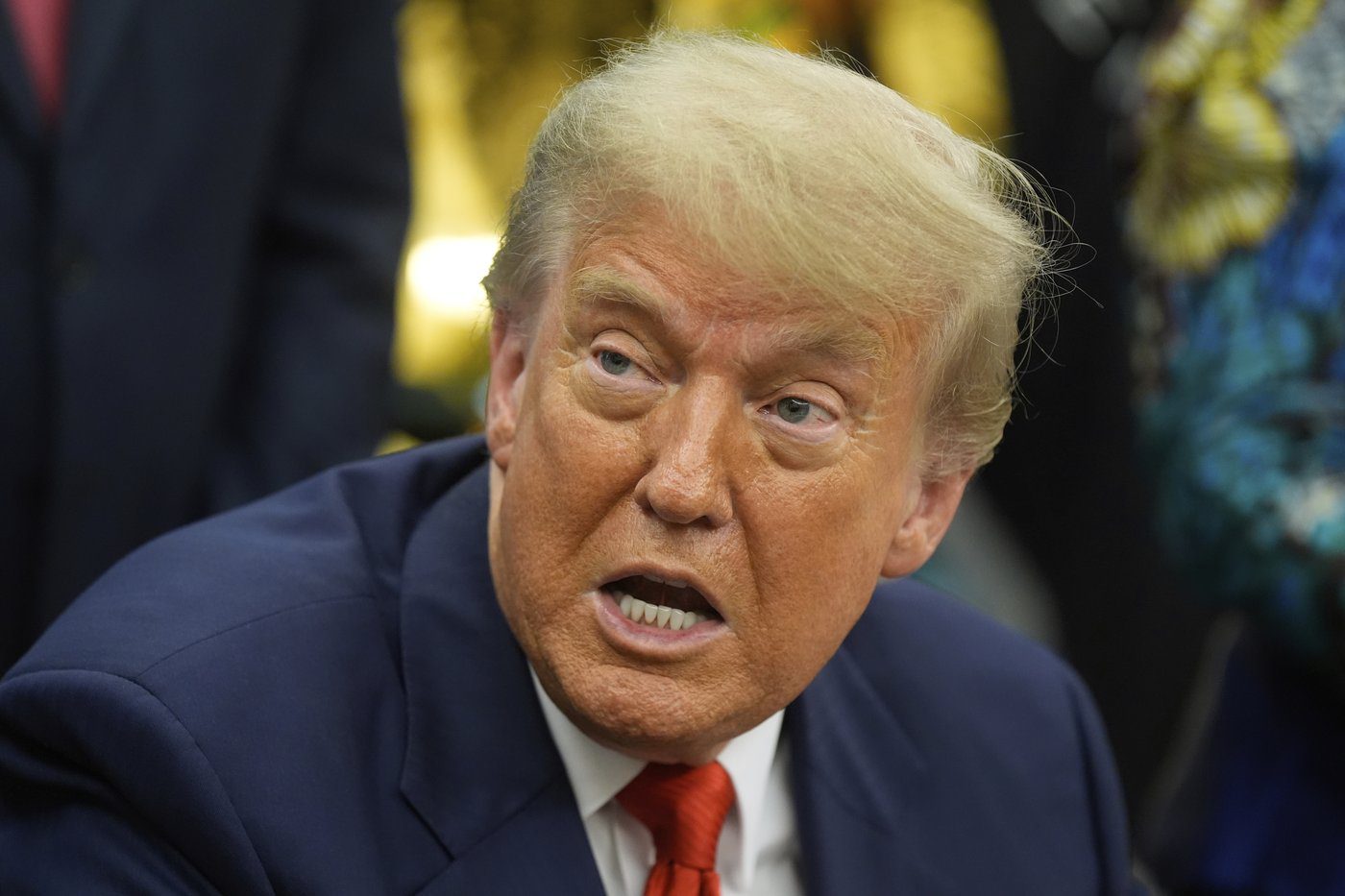
WASHINGTON (AP) — On Monday afternoon, the president of the United States was just another person complaining online about his service provider.
Donald Trump wrote in a pair of posts on Truth Social that he was trying to hold a conference call with faith leaders from all over the country but was unable to start the call because of technical difficulties.
“AT&T is totally unable to make their equipment work properly,” the Republican president said in a post. “This is the second time it’s happened. If the Boss of AT&T, whoever that may be, could get involved — It would be good. There are tens of thousands of people on the line!”
Trump then followed up with another post in which he said, “AT&T ought to get its act together.”
Representatives for AT&T responded to a post from the White House press secretary sharing Trump’s complaints.
“We’ve reached out to the White House and are working to quickly understand and assess the situation,” AT&T said.
The issue was resolved and the call started 20 minutes late, according to a White House official who was not authorized to speak publicly and spoke on condition of anonymity.
Trump rarely shies away from posting his gripes on social media, whether the target is foreign leaders, media organizations, elected officials or telecommunication companies.
The call he was delayed from holding was not on his publicly released schedule.
Between 8,000 and 10,000 leaders of Christian, Jewish and Muslim faiths were on the call, the first of a series that the White House expects to regularly hold with religious leaders.
During the call, according to the official, Trump spoke for about 15 minutes and touted provisions in his big tax breaks and spending cuts bill, like the boost to the child tax credit, the Israel-Iran ceasefire and African peace deals he brokered, and the pardons he issued for anti-abortion activists.
Michelle L. Price, The Associated Press
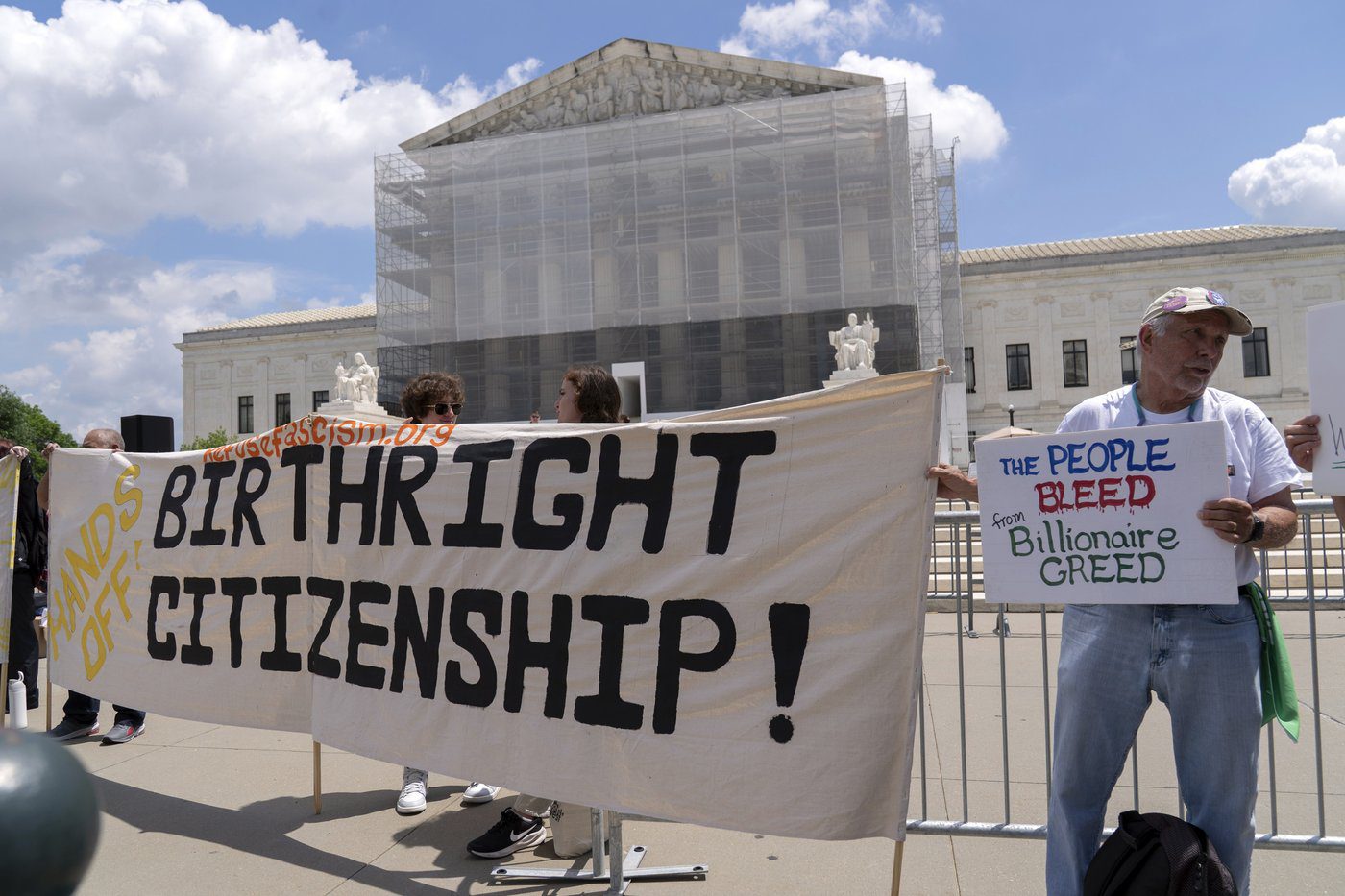
WASHINGTON (AP) — A federal judge on Monday questioned when the Trump administration will try to enforce its birthright citizenship executive order and asked if the government would attempt to deport U.S.-born children of people who are in the country illegally or temporarily before restrictions on birthright citizenship might take effect in late July.
Justice Department attorney Brad Rosenberg told U.S. District Judge Deborah Boardman that the administration doesn’t intend to deport any children covered by President Donald Trump’s executive while the Supreme Court has suspended its enforcement for 30 days. He called it a “hypothetical” question.
The judge gave Rosenberg until Tuesday to submit a written summary of what the administration believes it “can and can’t do” after last Friday’s Supreme Court ruling. She asked if the government would be “seeking to deport babies” before July 26. The judge said her question referred to children who were born after Feb. 19 and are covered by Trump’s executive order but aren’t plaintiffs in litigation challenging the order.
“No,” Rosenberg said. “I just want to be clear. I am responding to the court’s characterization of what it believes the United States might do after 30 days from the date of the Supreme Court’s decision. But, again, I would note that (federal agencies) have all been tasked with developing guidelines for implementation of the executive order. So I view that as a hypothetical.”
“I take the government at its word that the United States does not intend to do that and it is not doing that,” Boardman said.
Plaintiffs’ attorney William Powell said their clients are experiencing “incredible stress, anxiety and fear” after the Supreme Court’s decision.
“They’re not lawyers. It is confusing to them exactly what these things mean,” Powell told the judge. “We can’t really assure them, ‘Oh, no, the order is fully blocked,’ because it’s not.”
Powell said deportation isn’t the only “irreparable harm” that plaintiffs’ attorneys are concerned about.
“We’re obviously also concerned about other potential ways in which the (executive) order could be enforced to deprive newborns of potential rights,” he said.
Boardman, who sits in Greenbelt, Maryland, isn’t the only district court judge grappling with how to tailor their orders to comply with the Supreme Court decision written by Justice Amy Coney Barrett. Judges in Massachusetts and Washington state have issued a a separate orders on birthright citizenship, as has a judge in New Hampshire, though that order applied more narrowly and wasn’t nationwide.
New Jersey Attorney General Matt Platkin, who along with other states and cities brought a case in Massachusetts federal court, said in a letter Monday he was seeking a hearing on whether a nationwide order blocking the president is warranted. Platkin said the nationwide injunction in New Jersey’s case doesn’t run afoul of the Supreme Court’s recent opinion but added the high court offered “alternative forms of relief” while leaving debate over what those could be to lower courts.
The high court’s majority ruled that federal judges lack the authority to grant nationwide injunctions, but the decision left unclear whether Trump’s executive order on birthright citizenship could soon take effect in parts of the country.
Birthright citizenship automatically makes anyone born in the United States an American citizen, including children born to mothers in the country illegally. The right was enshrined soon after the Civil War in the Constitution’s 14th Amendment. The U.S. is among about 30 countries where birthright citizenship is applied.
Trump and his supporters have argued that there should be tougher standards for becoming an American citizen.
___
Associated Press writers Mark Sherman and Mike Catalini contributed to this report.
Michael Kunzelman, The Associated Press
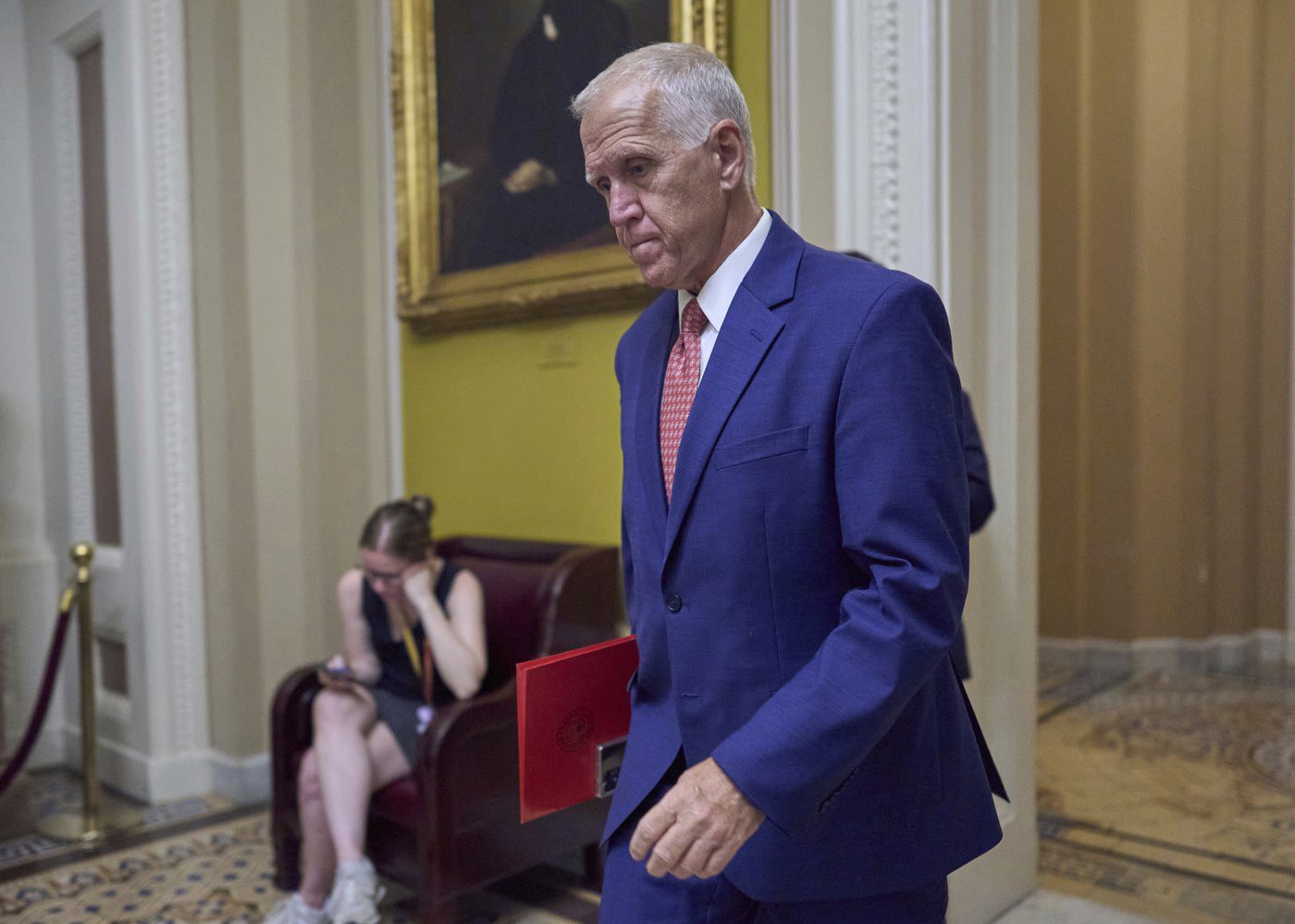
RALEIGH, N.C. (AP) — North Carolina Sen. Thom Tillis’ surprise retirement announcement over the weekend creates a sudden opening in next year’s midterm elections, setting off a scramble of successor speculation that includes both a former Democratic governor and a Trump other than the one who ultimately nudged Tillis into leaving.
Tillis’ decision, revealed Sunday after President Donald Trump threatened to back a primary candidate against him as Tillis opposed Medicaid reductions in the president’s tax break and spending cut package, is leading Republican politicians to size up whether they can lasso the electoral and financial support to compete for the seat.
Anyone getting a Trump endorsement is likely to have the inside track for the GOP nomination next March.
“There’s a tremendous amount of people who are looking at the position and trying to determine whether they have the fire in belly to run for it,” state Rep. John Torbett said on Monday. A Trump endorsement, Torbett added, “will have a large effect on the electorate.”
Democrats waiting on Cooper
The absence of an incumbent emboldens national and state Democrats in their bid to flip back the Senate, where Republicans hold a 53-47 advantage. A Democratic Senatorial Campaign Committee spokesperson said Tillis’ announcement was “another blow to Republicans’ chances as they face a midterm backlash that puts their majority at risk.”
But it’s still unclear whether their most high-profile potential candidate — former two-term Gov. Roy Cooper — is going to run. He hasn’t publicly revealed his plans, even though former U.S. Rep. Wiley Nickel launched his own bid almost three months ago.
Cooper left office last December as a popular figure — mentioned briefly as a vice presidential choice for Kamala Harris — who has never lost an election for state office, dating to the mid-1980s. He was elected attorney general four times and is known for his fundraising prowess.
Cooper spokesperson Morgan Jackson said Monday that Cooper “continues to strongly consider a run for the Senate and will decide in the coming weeks.”
Nickel’s campaign didn’t respond Monday to a message seeking comment, but Nickel said Sunday that “no matter which MAGA loyalist Donald Trump handpicks to run in North Carolina, I’m the Democrat who’s ready to take them on and win.”
Veteran Democratic consultant Gary Pearce said Tillis’ departure makes it imperative that Cooper get in the race: “We can’t let a Trump toady take that seat.”
Still, Democrats haven’t won a Senate seat in the ninth-largest state since 2008. That includes when Trump, as a former president, publicly endorsed then-U.S. Rep. Ted Budd for the GOP nomination nearly a year before the 2022 primary. Budd defeated former Gov. Pat McCrory in the primary by 34 percentage points.
South Carolina Sen. Tim Scott, chairman of the National Republican Senatorial Committee, said North Carolina voters would next year “elect a conservative leader committed to advancing an agenda of opportunity, prosperity, and security.”
Whatley, Lara Trump, Harrigan garner GOP attention
The list of potential Republican candidates floating on social media appears long, with two close Trump allies among those mentioned often — current Republican National Committee Chairman Michael Whatley and former RNC co-chair Lara Trump, the president’s daughter-in-law. Neither has publicly spoken about the seat.
Both are originally from North Carolina, with Whatley a former chief of staff to then-U.S. Sen. Elizabeth Dole and later state GOP chair before getting elevated to the RNC post last year.
Whatley, according to a person familiar with his thinking, is honored to have the RNC position and is neither actively considering nor putting out feelers for the Senate role. He sees his primary job as helping the White House find the right candidate, but also would not reject being considered, said the person, who spoke on condition of anonymity because they were not authorized to speak on the record.
Lara Trump now lives in Florida. She declined to run for the U.S. Senate in North Carolina in 2022 and in 2024 took herself out of the running to fill the term of Marco Rubio as he became secretary of state.
Another candidate mentioned often is first-term U.S. Rep. Pat Harrigan, a West Point graduate and former Green Beret who served in Afghanistan and later became a defense-products manufacturer. A Harrigan political consultant is a former Tillis aide.
Tillis has history of far-right critiques, close elections
Tillis’ retirement announcement — he will serve out the last 18 months of his term — heartened far-right Republicans and strong Trump supporters who have been unhappy for years with his willingness at times to challenge Trump’s actions and his Cabinet agency choices.
Tillis sent Trump a text message on Saturday night, alerting him that he would not be running for reelection by telling the president: “Start thinking about my replacement.”
Trump responded in the text, a copy of which was seen by The Associated Press: “I am! DJT.” The message was first reported by The Hill.
Trump and his team have already targeted one Republican incumbent: Kentucky Rep. Thomas Massie, launching a new super PAC devoted to defeating him that has already released an ad lambasting him.
While praised for pushing a conservative agenda as state House speaker, Tillis faced strong primary opponents in his first Senate bid in 2014 based on accusations that he was too moderate. But he avoided a significant challenge in the 2020 GOP primary and won two general elections by narrow margins over then-Sen. Kay Hagan and later challenger Cal Cunningham.
___
Colvin reported from New York. Associated Press writer Seung Min Kim in Washington contributed to this report.
Gary D. Robertson And Jill Colvin, The Associated Press

(RNS) — Faith Radio president Scott Beigle’s quest for Christian radio started with 1070AM, a former CNN news station in Tallahassee, Florida.
After moving from northern Alabama to the Florida Panhandle with his wife and three kids, Beigle, who is Baptist, noted the lack of Christian radio stations in the area and felt compelled to change that. Months later, on Oct. 6, 1997, that calling became a reality as the Faith Radio Network’s blend of evangelical Christian music and teachings hit the airwaves on 1070AM.
Nearly three decades later, the nonprofit network has grown to include 12 other Christian radio stations. Their flagship station, 1070AM, has been converted to a Spanish-language Christian station to meet the needs of Latino Christians in the region — “there was no one doing that in our area,” Beigle told RNS.
But in recent years, the future of 1070AM has become uncertain, even as Beigle said its message has become more vital.
“A lot of them, especially now with the immigration and all, they’re scared,” Beigle said of 1070AM’s Spanish-speaking listeners. “And we understand they’re scared to go out — but they’re not scared to listen, to turn that AM radio on to hear their language, and to hear how God can change their life.”
___
This content is written and produced by Religion News Service and distributed by The Associated Press. RNS and AP partner on some religion news content. RNS is solely responsible for this story.
___
In recent decades, AM radio, known especially for talk radio, has faded in popularity with the arrival of the clearer but more limited reach of FM signals, in addition to streaming and satellite radio. A 2025 survey from Barna Group and the National Religious Broadcasters found listeners access Christian radio from multiple sources, with 68% saying they listen to FM stations, 57% a website or app, 38% satellite radio and 37% AM stations.
While AM stations remain a smaller but consequential part of America’s radio landscape — the National Association of Broadcasters reports 80 million Americans still listen to AM radio each month on over 4,000 AM stations — AM radio now faces an existential threat: removal from cars. Citing dwindling audiences and technological clashes with electric vehicle equipment, automakers such as Ford, Volkswagen, Tesla and BMW have begun phasing out AM radio in some newer vehicles.
A diverse coalition of stakeholders linked with conservative talk shows, foreign language stations and religious broadcasters is teaming up in the halls of Congress, advocating to salvage AM radio’s spot on the nation’s dashboards, at least temporarily.
For many Christian stations, the legislative effort has spiritual stakes.
“We’re in the hope business — to see their lives changed,” Beigle said.
The AM Radio for Every Vehicle Act is the latest iteration of a bill that would require United States automakers to include AM receivers in new vehicles for the next 10 years. Though the bill has already gained broad bipartisan support — with at least 218 co-sponsors of the House version and 61 of the Senate — the House version is still in committee, while the vote on the Senate version has yet to be scheduled.
“We have more than enough votes to pass it in the House right now, but to make it a priority in a moment where there’s just a whole lot of four- and five-alarm fires you have to put out, it’s hard to do something that’s more of a long-term concern,” said Mike Farris, legal counsel for the National Religious Broadcasters, a multimedia association founded by evangelical Christian broadcasters in the 1940s. The NRB, which has more than 120 AM stations among its members, has been one of several groups advocating for the legislation.
Proponents of AM radio say the medium has long been a key source of emergency communication. The Federal Emergency Management Agency’s warning system relies on AM stations for emergency alerts, and local AM stations are known for distributing critical updates in a crisis — particularly in more rural areas, where AM is sometimes the only signal available. Carolyn Cassidy, a regional general manager for Christian media conglomerate Salem Media Group, said her stations give AM listeners in Tampa, Florida, information on how to prepare for, ride out and recover from severe storms during hurricane season.
“It’s a First Amendment issue, it’s a religious issue, but it’s also a public safety issue, because AM radio is the backbone of the Emergency Alert System,” said Nic Anderson, vice president of government affairs for Salem. He said he fears that excluding AM radio from cars is a move toward giving automakers control over what drivers can listen to.
Known for promoting Christian and conservative values, Salem Media Group owns and operates roughly 80 stations, 84% of which fall on AM, Anderson said. The group also has about 3,000 affiliate stations that are owned locally but carry Salem programs — of those, 900 are AM stations.
In addition to advocating on Capitol Hill, Salem has been raising awareness among listeners by distributing prerecorded, pro-AM radio public service announcements from evangelical Christian leaders and influencers such as Focus on the Family President Jim Daly and Turning Point USA founder Charlie Kirk.
“For generations, AM radio has brought the hope of the gospel, biblical teaching and encouragement right into our homes and cars, especially in times of crisis,” Kirk said in one of the announcements. “But now, some automakers want to eliminate AM radio from new vehicles. Let’s stand together and protect this ministry lifeline.”
Broadcasters say one reason Christian stations are especially available in the AM format is because it’s a more affordable option than FM, making it more accessible to smaller, niche stations of all stripes, including farming and foreign language stations.
“AM allows for certain formats that can’t command the bigger dollars from agencies. They have more of a local appeal,” said Orlando Boyd, general manager of The Gospel Nashville, which offers a mix of music and talk shows that cater to Christian audiences. “It’s really to get that foot in the door … for people trying to break into the radio business.”
Boyd said The Gospel Nashville began as an AM station and later added an FM translator, which “piggybacks” on the AM station to play the same content on an FM frequency. But the AM station is still a key part of the branding and reach. It’s vital, he said, for listeners in remote settings and is often the first choice for those over age 40.
Sheila Brown, who owns two AM radio stations — WUFO (1080AM) in Buffalo, New York, and WIGO (1570 AM) in Atlanta — said listeners on the east side of Buffalo and the south side of Atlanta especially depend on these stations’ unique blend of R&B, gospel and talk shows to reflect their interests and experiences.
“We’re running our own narrative when it comes to our talk shows, our music, our format. No one else in either city has the formats that we have,” Brown said.
Brown started her career in an entry-level position at WUFO in 1986 and worked her way up to become owner and CEO in 2013. She went on to purchase WIGO in 2022. While WUFO in Buffalo has since added a translator to air its content on an FM signal, WIGO in Atlanta is a standalone AM station.
Brown’s stations feature daily gospel music and sermon segments, and on Sundays, they play religious content all day. That’s why for the lifelong member of Pilgrim Missionary Baptist Church in Buffalo, the fight for AM radio is a matter of faith.
“You have so many people that are sick and shut in, who can’t get out to their churches like they used to,” Brown said. “But when they turn to us, they’ll get the same singing, ministry, preaching that they would if they would be at their church.”
Kathryn Post, The Associated Press
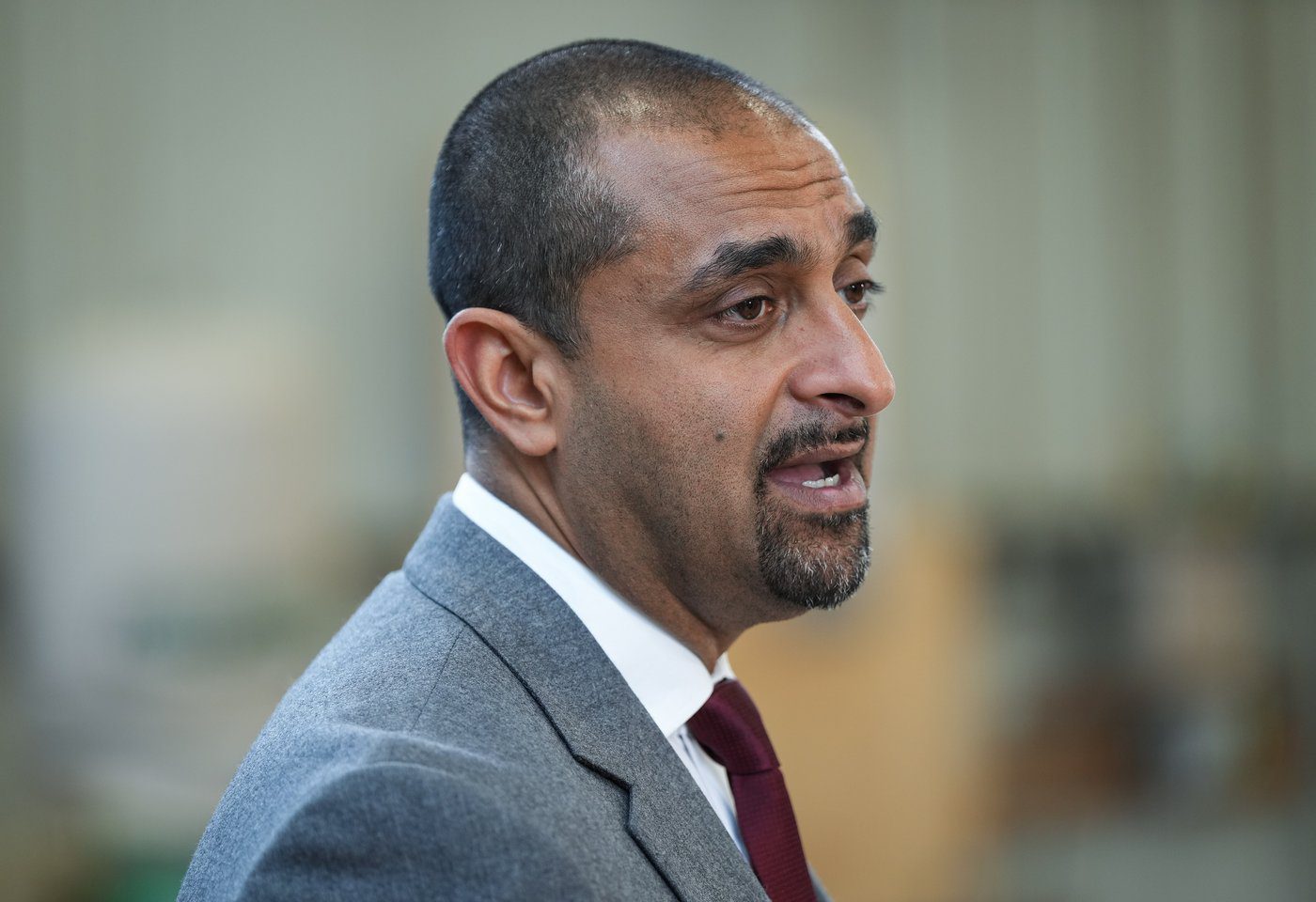
VANCOUVER — British Columbia’s government is forming a working group to tackle a number of safety issues in supportive housing, including concerns of drug trafficking, weapons and second-hand exposure to fentanyl.
Housing Minister Ravi Kahlon says there is consideration of removing the facilities from the Residential Tenancy Act, which would allow housing providers to kick out dangerous people taking advantage of vulnerable tenants.
The announcement comes after a number of recent incidents, including a fire on June 11 at the former Howard Johnson hotel in Vancouver that injured two people.
Fire crews say they have been called to the site more than 900 times since the facility was converted to supportive housing in 2020, and police also say they have been called to the location thousands of times during the same period.
Downtown business groups in Vancouver and Victoria have made recent pleas to government about doing more to address the public safety situation, with the deteriorating conditions severely hampering local shops’ ability to continue operating.
Kahlon says in a statement that the working group will involve law enforcement, supportive housing providers, union representatives and BC Housing “to ensure safety for tenants and workers is paramount.”
“We have heard from providers that they need more authority to take action and keep people safe and we will be working with our partners to find a path forward that ensures people can live in a safe, inclusive and supportive environment,” Kahlon says.
The ministry also says it is working with the BC Centre for Disease Control to look into the impact of the toxic drug crisis on supportive housing.
It says early results from testing 14 buildings in both Victoria and Vancouver show that some supportive housing areas may be “more likely to have elevated levels of airborne fentanyl, above the limit WorkSafeBC has established.”
The province says there have been almost 7,500 new supportive housing units opened in B.C. since 2017, and another 2,900 are in progress.
This report by The Canadian Press was first published June 30, 2025.
Chuck Chiang, The Canadian Press

VICTORIA — British Columbia’s attorney general says the government has received a report from a retired judge on ways to improve safety and security at events after 11 people were killed and many more injured at a Vancouver festival.
Premier David Eby commissioned the inquiry into safety at community events shortly after a vehicle tore through a crowd at the end of the Lapu Lapu Day celebration on April 26.
Attorney General Niki Sharma says she has the report from former B.C. Supreme Court chief justice Christopher Hinkson, which after review by cabinet will be made public.
Sharma says in a statement that B.C. experienced one of the worst moments in its history when a senseless act of violence turned a celebration into tragedy.
She says B.C. residents understandably raised questions in the aftermath about enhancing public safety so people can feel safe attending and celebrating community events this summer.
The man accused in the attack, Adam Kai-Ji Lo, remains in custody while facing numerous charges of second-degree murder, and Vancouver police said last week that six victims were still in hospital.
Sharma says the commission was established to provide practical information and recommendations to event organizers, local governments and public safety officials on how to keep events safe.
“I thank Commissioner Hinkson for the work he and his team have done over the past six weeks to enhance and protect our right to gather and celebrate safely and ensure that fear does not prevent communities from coming together,” Sharma said in her statement.
This report by The Canadian Press was first published June 30, 2025.
The Canadian Press